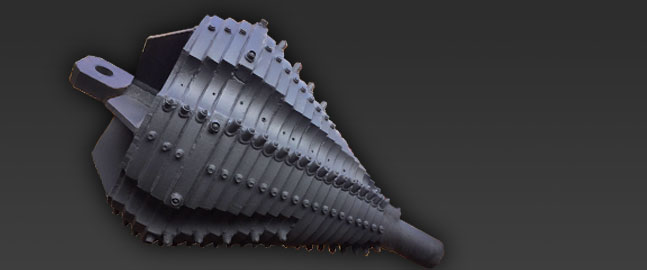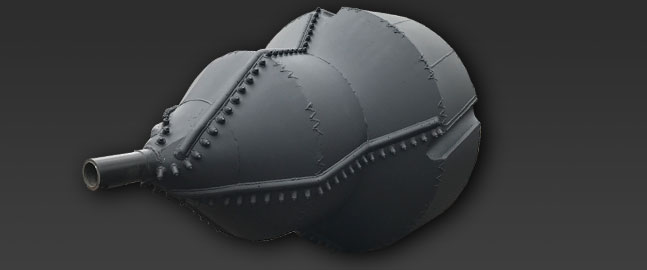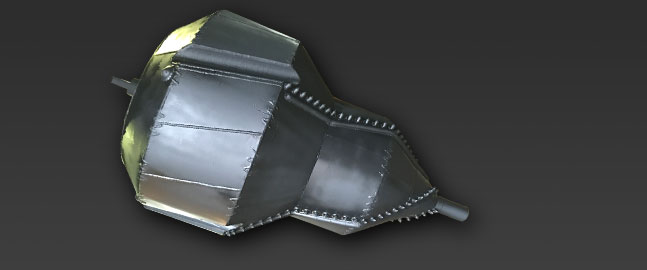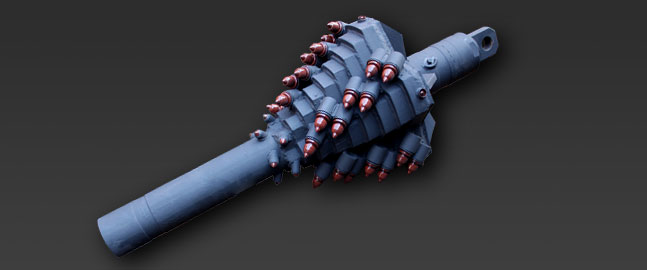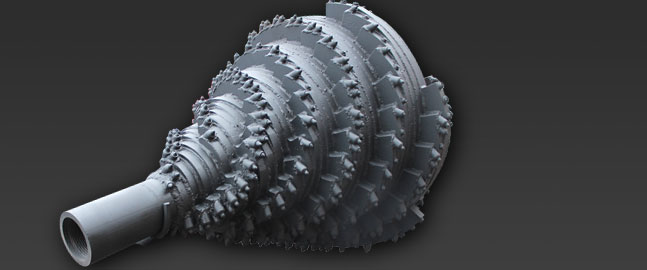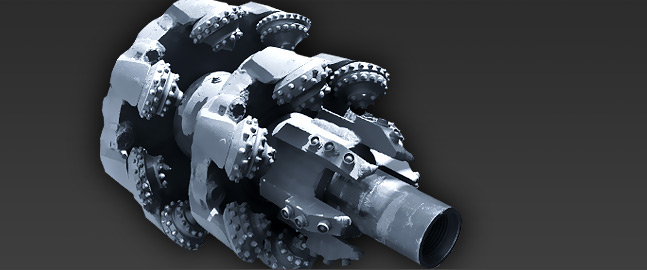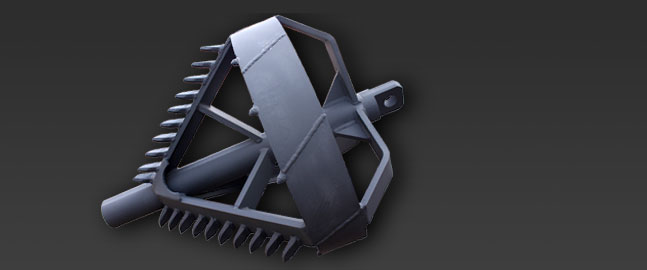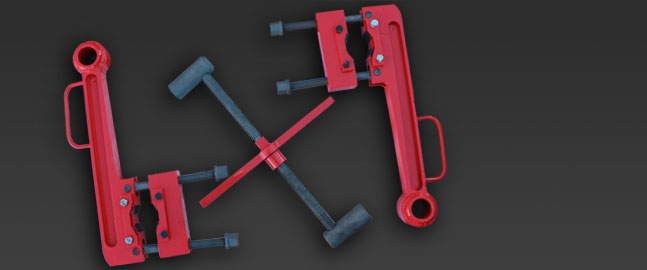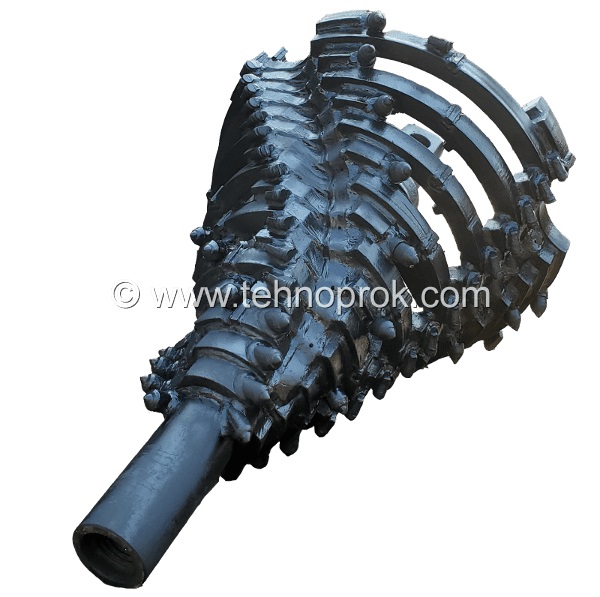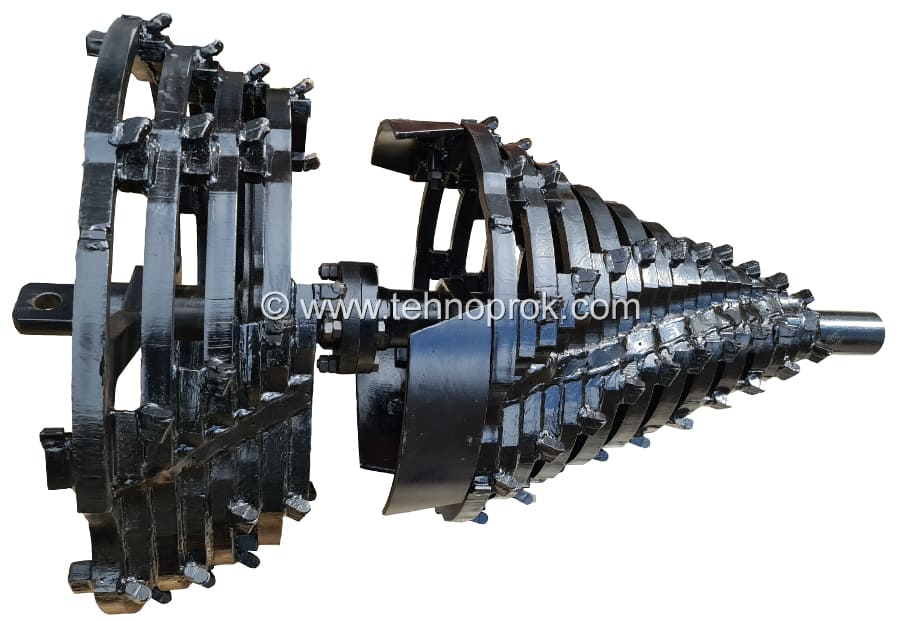Compaсt and Rhino
Turbo reamer
Turbo Reamer system project reamer is one of the recent developments of TECHNOPROK-61 LLC. It combines the performance characteristics of the following HDD reamer types: Cutting, Carrot, Compact, Kodiak, Mill, being a multipurpose tool for drilling in soils and rocks of up to 5 Protodyakonov hardness scale: clay, loam, sand, shell rock, sandstone plates, soft limestone, marl, sandstone, pebble inclusions.
Turbo Reamer system technical specifications
| Parameter | Value |
|---|---|
| Diameter | 300 - 1800 mm |
| Scope of application | clays, loams, sand, shell rock, sandstone plates, soft limestone, marl, sandstone, pebble inclusions |
| Abrasion protection | Special protection |
| Features | 3 configuration types: light - with cutter bits, standard - with cutting and rotary bits, heavy - with an increased number of rotary cutters |
Turbo Reamer Design
The advantage of these tools is considered their low power consumption, i.e. a low-power HDD machine drills boreholes with larger diameters than those normally used. For example, underreaming right after a pilot bore to a diameter of 400 mm, then 600 or 700 mm is performed using a 20 tons pulling capacity machine. More powerful machines can perform underreaming up to 600 and 900 mm respectively. This is achieved due to the low specific weight, the lattice reamer body design, the use of special wear-resistant cutters mounted on the body to a high precision. For drilling fractured rock and gravels, rotary cutters are installed instead of cutting bits.
The performance of the Turbo Reamer technology reamers focuses on easy drilling. The installation of an increased number of wear-resistant cutting bits makes it possible to cut through the soil instead of crushing or squeezing it out. Due to the body design, the soil is grinded and removed from the borehole with minimum energy input.
The advantage of this technology is not only increased productivity, but also the accuracy of the borehole path. It is known that after each reaming, the well is drilled downwards by the weight of the drill string. In loam, for example, a 600 mm diameter borehole expands in 3-4 passes and the downward deviation can be up to 400 mm. In many cases, this is unacceptable. The path downward deviation during single-pass reaming of the pilot bore to 600 mm diameter with our new reamer will not exceed 50 mm. In addition, this makes unnecessary the second or third assembly and disassembly of the drill string and transportation of drill pipe magazines with rods to the other side of the well and vice versa.
HDD drilling targets differ in length, borehole diameter, variety of drilled formations, paths being laid. HDD entities are forced to have a large number and variety of drilling tools to carry out these jobs. It is expensive, even inconvenient in terms of storage and transportation of drill products.
It is much cheaper, more efficient and convenient to use modular drill tool designs that are assembled on site in task-specific configuration.
For example, for drilling in liquid soils, Rhino type volumetric reamers are used. They are expensive and rarely used; and have the disadvantage of sticking to soil with a large, smooth body surface when in use. Alternative: for example, a combination of Turbo Reamer module with a centralizer float or stabilizer float. Turbo Reamer can often be used on multiple sites, and other modules are an inexpensive add-on. The modules in our products are furnished with quick-assembly and quick-detachable connections.

